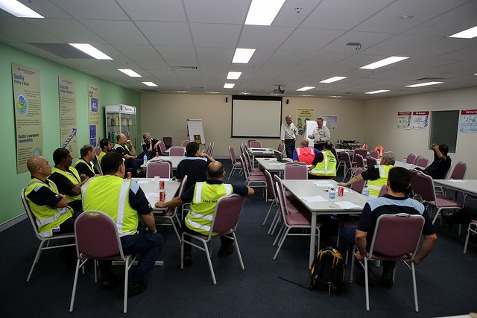Types of Workplace Emergency Plans: Points to Consider
The cause of an emergency in the workplace can be any number of things – an outbreak of fire, an explosion, a chemical accident, electrical faults and sometimes even structural collapses.
Simple accidents, like slipping or falling, may be commonplace but when more than one person is injured or the threat of a large scale incident becomes apparent, then definite steps beyond accessing a first aid kit or automated external defibrillator are required.
Occupational Health and Safety legislation states that PCBUs must have emergency plans to handle a wide variety of possible emergencies at work. But specific incidents require specific steps to be taken.
We look at three possible accidents and some of the key points that need to be covered by an emergency plan.
Multiple Casualties
Some accidents can result in multiple casualties. For example, if a structure collapses, perhaps 10 or more employees might suffer broken limbs and head injuries.
Calling the emergency services is essential, but within the 10-15 minutes it may take for them to arrive, there should be sufficient first aid supplies to handle the situation. It may be necessary to quickly access all kits on the premises.
The chaos that a major accident can cause means it is important staff immediately know what to do, making prior delegation and instruction absolute musts.
- Ensure a first aider is always on duty
- Ensure the emergency services number is known or easy to find
- Locations of all first aid kits should be clearly shown on an accessible map
- Delegate responsibilities to prevent confusion
- Remove injured employees quickly from a scene
- Identify a safe area to take employees to
- All appropriate safety equipment must be available and accessible
- Ensure detailed and up-to-date safety sheets are available
- Have relevant posters clearly visible in appropriate areas (workfloor, first aid room etc)
Chemical Accident
Depending on your workplace and the work done there, the risk of chemical-related accidents can be high or low. A laboratory, for example, is likely to have a higher rate of chemical burns than a common office, while some manufacturing complexes may have a high risk of large chemical explosions.
Dealing with such incidents depends greatly on the nature of the accident. Small skin burns can often be dealt with through your first aid kit contents, but larger incidents may need specific equipment. For example, a chemical spill may need a special absorbent material (material, powder, liquid) to cover, segregate or neutralise the spill.
- Ensure a properly trained employee is always on duty
- Ensure the emergency services number is known or easy to find
- All chemicals must be clearly labelled
- Chemical containers should be securely stored
- Ensure a strict storing/tidying up procedure exists
- All appropriate equipment and clothing must be available and accessible
- Ensure detailed and up-to-date safety sheets are available
- Have relevant posters clearly visible in appropriate areas (work floor, first aid room etc)
Outbreak of Fire
A fire can break out in any number of ways, and can often spread extremely quickly. It is, therefore, essential that staff know how to react immediately to any outbreak.
There is an added factor to operating equipment, like fire extinguishers, with the type of fire often dictating the type of fire extinguisher to be use. For example, a foam extinguisher, or dry powder extinguisher, is recommended when dealing with flammable liquids or chemicals. Using the wrong extinguisher can prove ineffective or even worsen the situation.
- Ensure a properly trained employee is always on duty
- Ensure emergency services number is known or easy to find
- Appropriate fire protection equipment must be available and easily accessible
- Identify the workplace ‘hot spots’, areas most at risk
- Ensure fire protection equipment is continually maintained
- Be sure to keep relevant extinguishers for different fires (chemical, electrical etc) and that employees know the difference
- Keep equipment location clear of obstructions at all times
- Ensure detailed and up-to-date safety sheets are available
- Have relevant posters clearly visible in appropriate areas
For further reading on Emergency Plans and how to go about drawing them up, check out the official Safe Work Australia PDF: www.safeworkaustralia.gov.au/AboutSafeWorkAustralia/WhatWeDo/Publications/Documents/657/Emergency_plans_fact_sheet.pdf
All this training and much more is available for Australian corporates through Alsco’s Managed Training Services. Be WHS compliant and safer at your workplace with Alsco First Aid and Fire Marshall Training. Be safer with Alsco!
Further Reading:
- ‘Code of Practice: Managing Risks of Hazardous Chemicals’, Safe Work Australia – https://www.safeworkaustralia.gov.au/media/risk-managing-hazardous-manual-tasks
View Previous Posts in this Series:
Image Courtesy: Matt DeWaard


LEAVE A REPLY
Your email address will not be published. Required fields are marked *
You must be logged in to post a comment.